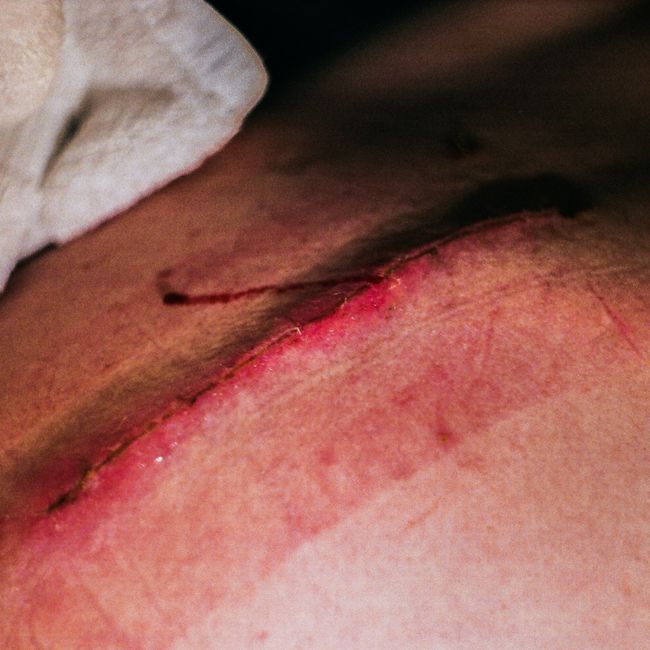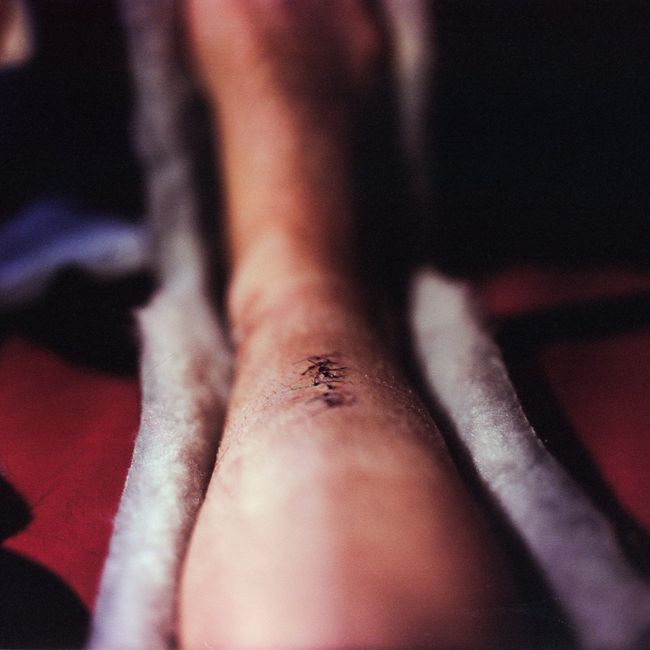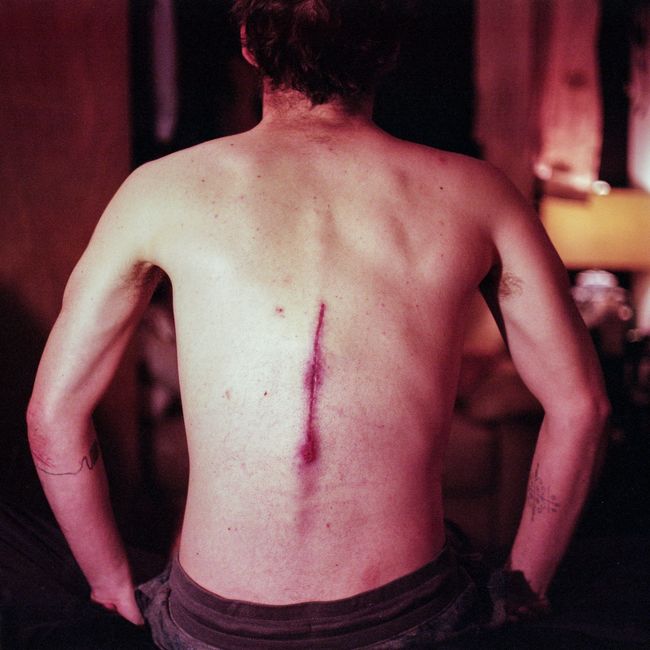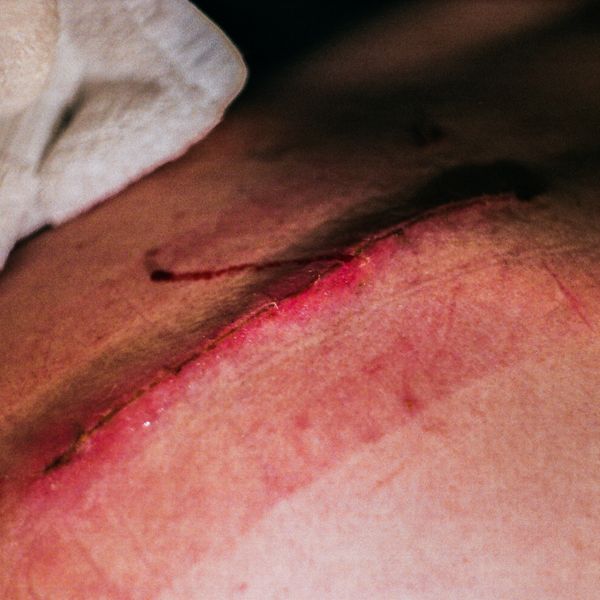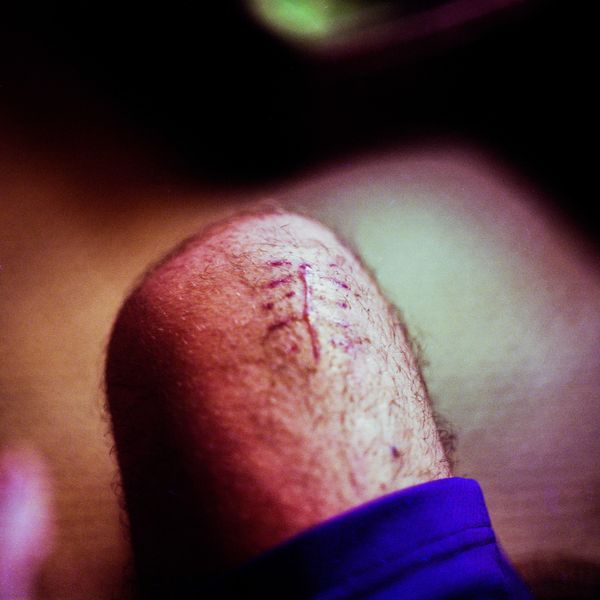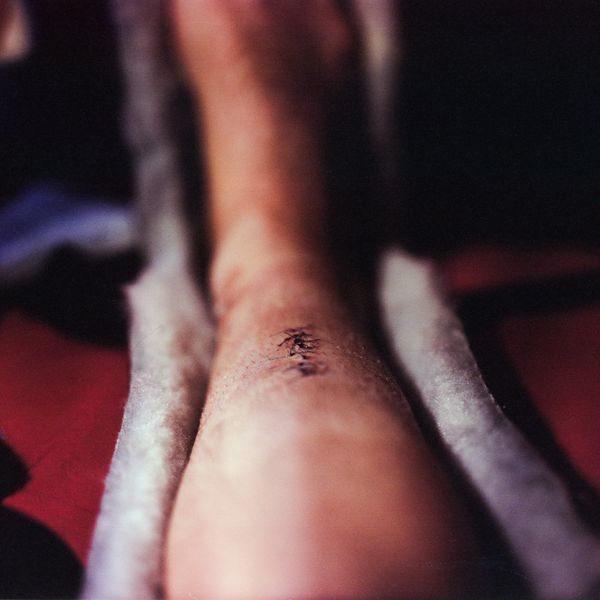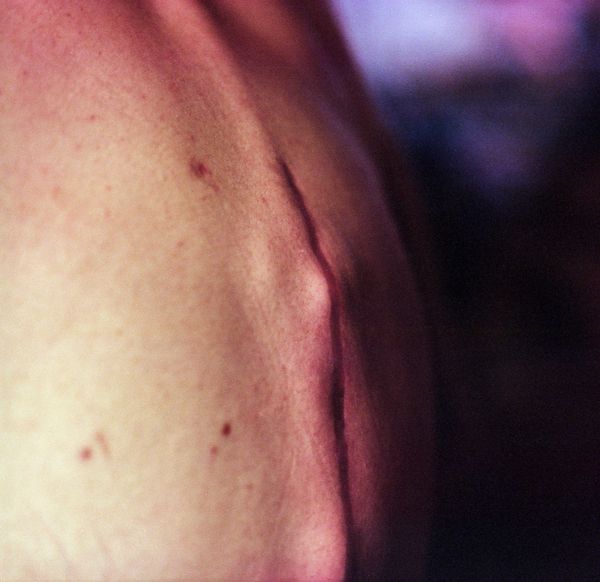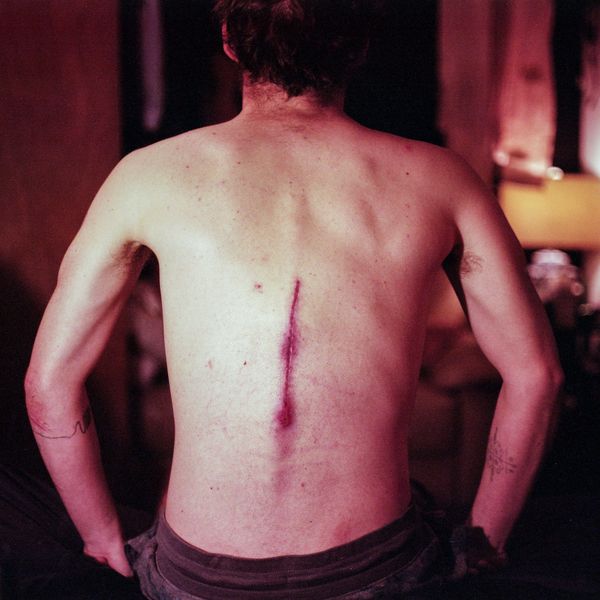Eleven Bones Later
-
Dates2020 - 2021
-
Author
- Topics Contemporary Issues, Fine Art, Documentary
- Locations Shoreline, Seattle
This is a visual journal of my body recovering from being hit by a drunk driver while walking to work.
It’s hard to decide what the worst part of this experience has been. It certainly wasn’t immediately when the car hit me; that moment was one of shock and disbelief, but not horror. There are a few top contenders: the feeling of the bones grinding together when they set the shattered tibia and fibula in my leg, getting the drain in my spine pulled out after surgery, vacuuming vomit out of my mouth because I couldn’t move my head. There were parts that were hard, but not scary: getting a catheter removed and reinserted, having to drag myself onto the commode beside my bed, the constant pain for months, quitting the opioids the hospital prescribed as someone who was addicted to them in high school and went to rehab for them. There’s the unexpected; I’m a whole two inches shorter than I was before thanks to my seven broken vertebrae and spinal fusion surgery, which involved implanting pieces of bone from cadavers. In total I had eleven broken bones. And, on top of everything, covid restrictions preventing my friends from being able to visit and the extreme risk covid would carry if I contracted it while already so compromised. Then, of course, there is the anger at the driver for driving drunk, speeding, and hitting me, which I have had to let go. He was the same age as me, even attending the same school. I had dreamed of being a globetrotting photojournalist, especially after I spent the spring and summer photographing BLM protests, exposing the problems of the world and standing in the face of danger. Now, my plan is to study large format photography and earn the degrees and certificates required to teach photography at a college level, as I can no longer rely on my body in the way I used to. I would be lying if I said there weren’t good aspects, as I will hopefully never again have to return to working the graveyard shift at Fred Meyer that I had been walking to when I was hit, but that is a small consolation in return for the integrity of one’s spine. It has been hard, but these photographs have helped me to process this experience. To turn it into something with beautiful aspects, keeping a visual diary of my recovery, and to show others what can happen, has helped me keep my sanity.
I was inspired in this project in large part by photographs from the first world war of some of the first people to undergo plastic surgery, due to the horrific new weapons such as gas and machine guns. The unflinching portraits of these men, in many cases missing more than half of their face, not only influenced my photography, but also helped me to better face my own recovery by seeing their courage. My hope is that this work can do the same for people going through trials of their own.
